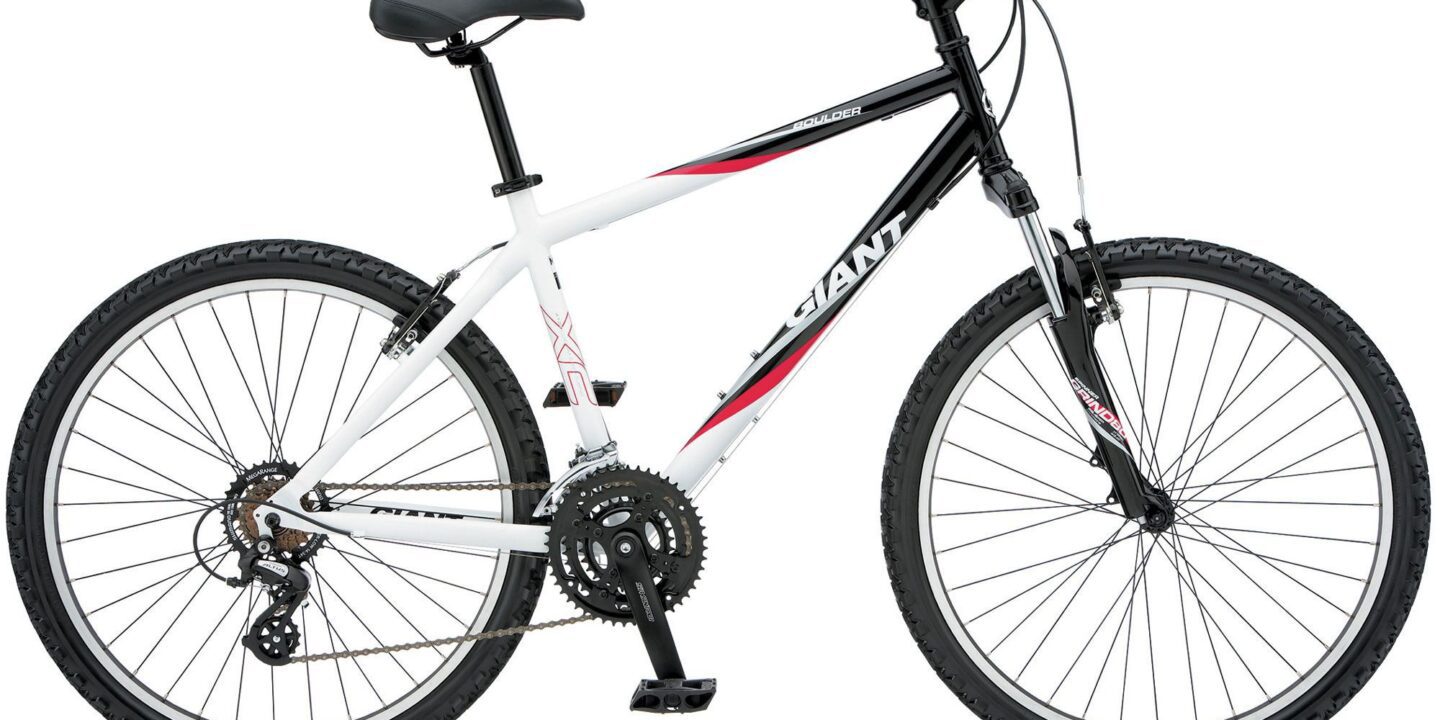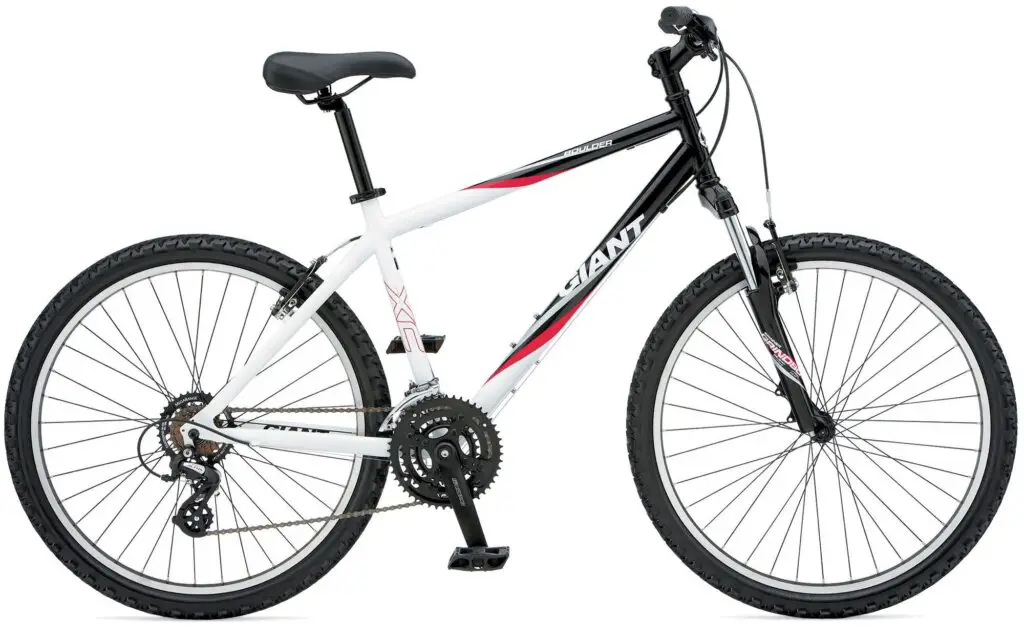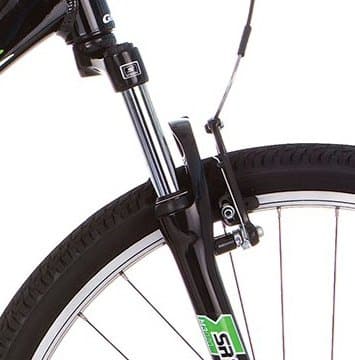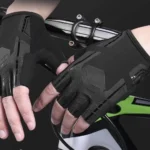
Giant Bicycles is well-known for their recreational off-road bikes. The 2018 models, Boulder 1 and Boulder 2, are no exception. They offer a great value for the price. These bikes are perfect for those who are new to off-road riding and want to invest in a durable option for their future adventures. The Giant Boulder Mountain models are a great starting point for anyone looking to take their riding to the next level.

Table of Contents
Tech Specs
| FRAME SIZE | Extra Small To Extra-Large |
| BRAKE TYPE | Boulder 2 Uses Alloy V-Brakes |
| SHIFTER | Shimano 3×7 Shifter EF500 (Boulder 1) , EF41 (Boulder 2) |
| RIMS | Giant Alloy Rims |
| TIRES | Kenda 26 X 2.10 (Boulder 1), 26 x 1.95 tires (Boulder 2) |
Both the Boulder 1 and 2 models have a strong foundation with alloy rims, hubs, and stainless spokes. Both start with the same ALUXX-grade aluminum frame, but the similarities stop there. The size and color options, as well as the seat posts, are different.
The Boulder 1 and 2 have a smooth suspension fork and lightweight frame, making them perfect for recreational riders. Whether you’re new to off-road riding or unsure if you’ll be a long-term rider, these bikes are a great choice. Giant Bicycles is dedicated to providing the ultimate cycling experience, and that dedication is evident in their entry-level bikes as well. The innovation and expertise used in their higher-priced bikes is also present in the Boulder models, resulting in a comfortable and interactive first riding experience on the mountain bike.
Frame Size
The Boulder 1 offers sizing from extra small to extra-large, while the Boulder 2 limits users to extra small through large sizing. That said, most riders will find a suitably sized Boulder to accommodate them whether they’re 5 feet or 6 feet tall.
However, Boulder doesn’t reveal specific weights for either of its bikes in this class, only noting that the range of adjustable and additional features can have a huge impact on the overall weight. Therefore, it’s best to visit a retailer where you can test this bike out a bit if the heft of it is a big concern.
Brake Type

The Boulder 1 and 2 models both use alloy brakes for optimal stopping power. However, they use different types of brakes. The Boulder 2 uses alloy V-brakes while the Boulder 1 has linear pull. Both models use Shimano brake levers, which ensure quick stopping time and reliable performance.
Shifter
Both the Boulder 1 and 2 models feature a Shimano 3×7 shifter. However, the Boulder 1 has the EF500 and the Boulder 2 has the . This range of shifters is a great addition to these bikes, considering the price point.
Rims
The Boulder 1 and 2 models both feature Giant alloy rims. The Boulder 2, however, has single-wall alloys, while the Boulder 1 has double-walled rims. Double-walled rims are generally considered stronger, so this may be an important factor for some buyers to consider when making their decision.

Tires
The Boulder 1 and the Boulder 2 bicycles come with Kenda tires, but the sizes of the tires are slightly different. The Boulder 1 is equipped with Kenda 26 X 2.10 tires. However, the Boulder 2 has a slight deviation, it comes with 26 x 1.95 tires.
Price Range
Despite the notable differences between the Boulder 1 and 2 subsets, there is one similarity: the price. According to Giant Bicycles, the price range between the two models is typically less than $100.
It’s impressive that both models offer room for expansion and upgrades at such a low price point. This feature is perfect for leisure and recreational riders who want to add their own personal touch to their bike. Additionally, the base package is also suitable for riders who just want to enjoy a leisurely ride without any upgrades.
Giant Boulder Mountain Pros & Cons
| PROS | CONS |
|---|---|
| -Butted Aluminum Frame -SR Suntour Suspension Fork with 63mm Travel (Available in two types but same specs) -Shimano Tourney Derailleurs -Alloy Hubs and Stainless Steel Spokes -Comes in different color options (Grey/Neon and Green/Black for Model 1, Blue for Model 2) | -Giant Alloy Seat Post without dropper function -Boulder 1 has a Sealed, Threaded Bottom Bracket Cartridge, Boulder 2 has a Semi-Sealed Bottom Bracket -Standard High-Tensile Steel Handlebars, no exceptional grip features. |
Buying Guide
If you are looking for a quick and easy trail ride without the need for advanced bike performance mechanics, then the Giant Boulder is the perfect option for you. Both the Boulder 1 and 2 offer new riders with the basic necessities for a comfortable and adaptable ride, all while maintaining an affordable price point.
Additionally, any additional upgrades or add-ons won’t break the bank since you are already starting with a practical and basic bike. This means that if you decide you would like a different seat or seat post later on or if you want to upgrade your handlebar or pedals, you won’t have lost much by starting with the Boulder.
Both of the Boulder’s two new entry-level bikes are serious contenders in terms of weight and handling on both gravel and dirt. As you get used to how the bike responds on your first few rides, you’ll come to appreciate the lack of unnecessary features and learn to enjoy the ride for what it is.
Final Words
While the Giant Boulder may not be suitable for leisurely rides on city streets, it is the ideal choice for recreational mountain biking for those new to the sport. The affordable price point allows for the freedom to add or remove parts until you are satisfied with the end result. Additionally, Giant offers options within the Boulder class, with slight differences setting the Boulder 1 and 2 apart.
Over the years, Boulder bikes have proven to be durable and able to withstand wear and tear while still providing a comfortable ride. The 2019 offerings are no different and buyers can expect a rewarding cycling experience on dirt, gravel, or rough terrain.
If you are hesitant to buy an expensive trail bike due to the cost, the Giant Boulder makes the dream of trail riding an affordable reality.
Read more about Mountain Bikes here…








